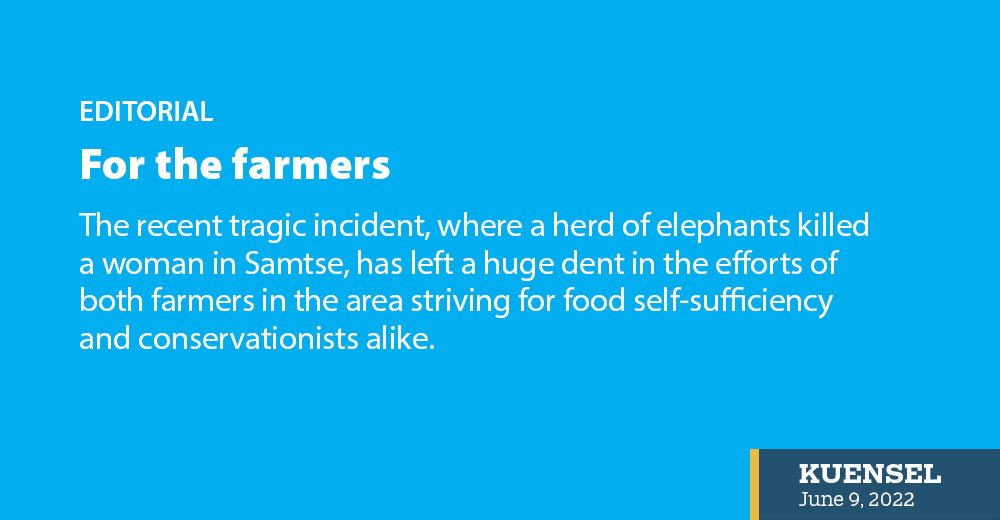The recent tragic incident, where a herd of elephants killed a woman in Samtse, has left a huge dent in the efforts of both farmers in the area striving for food self-sufficiency and conservationists alike.
This is not the first death in Samtse. In December 2019, a 69-year old woman was trampled to death. In June last year, a 62-year-old man survived an attack by an elephant in Tashichholing. The problem worsened this year.
A herd of about 15 elephants have been rampaging the area for a while damaging crops and areca nut trees.
In other areas, farmers not only lose their crops to wild animals but predators like tigers prey on their domestic animals. The conflict needs a more sustainable solution.
Agriculture Minister Yeshey Penjor reported to the National Assembly that the government has distributed more than Nu 259 million worth of electric and other fencing materials to 30,526 farming households across Bhutan in the past three years.
Farmers tried to fence their fields to address the problem. It wasn’t a solution.
Human-wildlife conflict affects both sides often in tragic ways, like the death of villagers in Samtse and bears falling into traps. Every year foresters arrest locals who poisoned or trapped animals.
Bhutanese have always shared space with our wildlife and coexisted in harmony. No doubt, the repercussions are sometimes grave like what occurs in Samtse and Trongsa every year. However, the solutions lie elsewhere, beyond the fences to which neither people nor the animals will adhere. Moreover, if there is no proper maintenance, resources would only go into waste. In some communities, they have already become defunct.
The best way forward is to ensure that the locals view an engagement with the wildlife as a path toward development. We already have an inclusive development plan with a long-term vision that cares for the environment. Investment into mitigation measures must come in bigger packages and faster.
What is urgently needed, in the short term, is decent compensation for human casualties or loss of crops. The agriculture ministry, which also looks after the park systems, has been working on a new scheme since this government came to power. As such initiatives drag on, the aggravating circumstances could force farmers to take matters into their hands or leave their farms fallow entirely and migrate to urban areas in search of an easier livelihood.
Mitigating human-wildlife conflicts have to factor in incentives for local communities. So far, the communities haven’t had enough of those.


